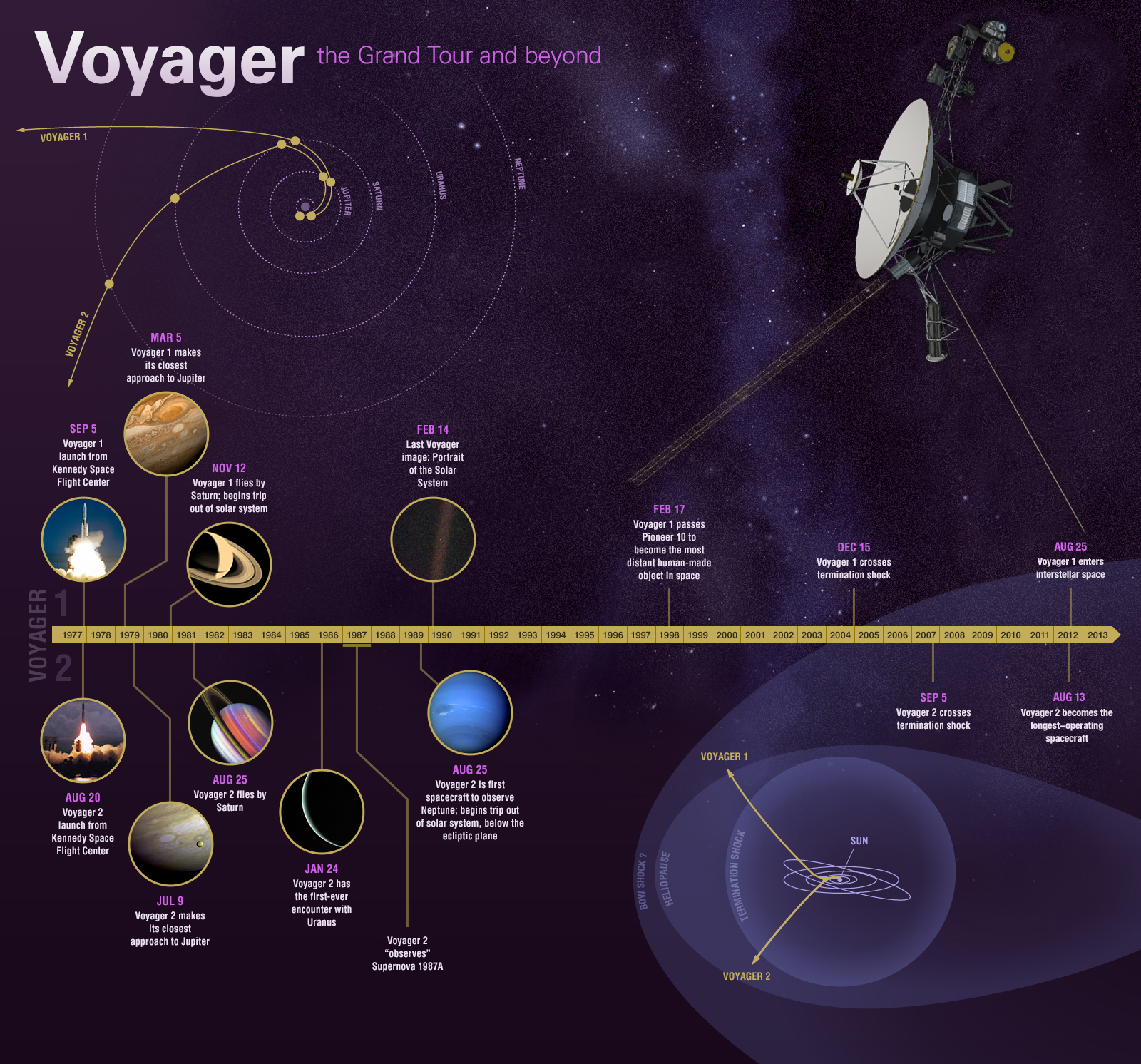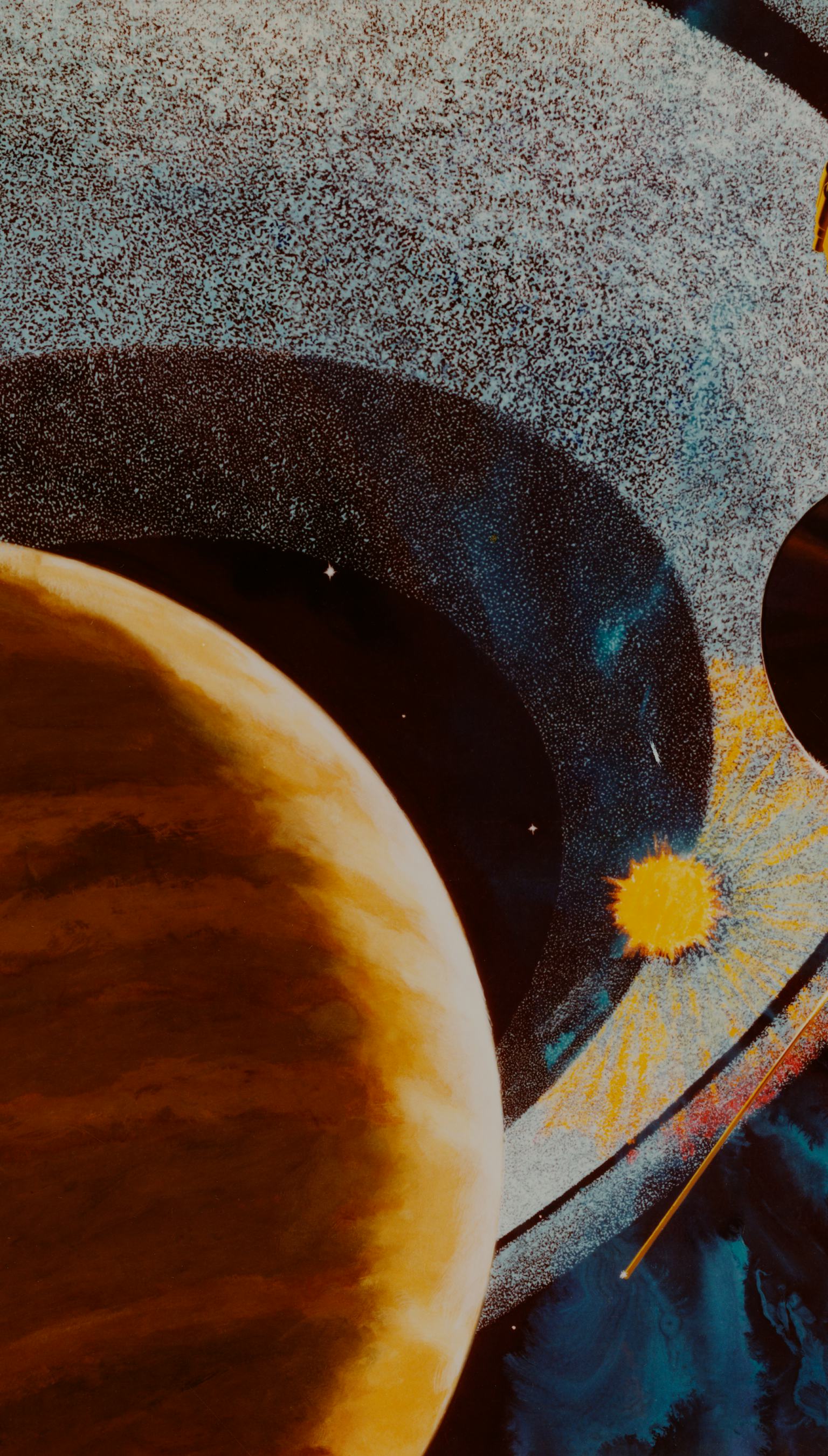Space exploration has always been a source of wonder and inspiration for humanity. And at the forefront of this journey is Voyager 1, a spacecraft that continues to astonish scientists and space enthusiasts alike. Since its launch in 1977, Voyager 1 has been hurtling through space at an unimaginable speed, breaking records and sending back valuable data. But just how fast is Voyager 1 speed? Let’s dive into the details and uncover the secrets behind this incredible mission.
Picture this: a tiny spacecraft, smaller than your average car, launched over 45 years ago, and it’s still going strong. It’s not just traveling through space; it’s racing through the cosmos at speeds that defy imagination. Voyager 1 speed isn’t just about numbers; it’s about the relentless pursuit of knowledge and the desire to explore the unknown. This mission has redefined our understanding of space and our place in the universe.
Now, you might be wondering why Voyager 1 speed matters so much. Well, it’s not just about the speed itself. It’s about what this speed allows Voyager 1 to achieve. From exploring the outer planets of our solar system to venturing into interstellar space, Voyager 1 has been a game-changer in the world of space exploration. So, let’s get started and unravel the mysteries behind this remarkable spacecraft.
- Exploring Traditional Jewish Surnames A Journey Through Heritage And Identity
- Why Do Asian People Have Different Eye Shapes Exploring The Science Culture And Beauty Behind It
Table of Contents
- Introduction to Voyager 1 Speed
- The History of Voyager 1
- Voyager 1 Mission Objectives
- Understanding Voyager 1 Speed
- The Technology Behind Voyager 1
- Data Sent by Voyager 1
- Key Milestones of Voyager 1
- The Impact of Voyager 1 Speed
- What’s Next for Voyager 1
- Conclusion: The Legacy of Voyager 1 Speed
Introduction to Voyager 1 Speed
Why Speed Matters in Space Exploration
Space is vast, and getting anywhere in it takes time and energy. That’s where speed comes into play. Voyager 1 speed isn’t just about how fast the spacecraft is moving; it’s about efficiency and effectiveness. The faster a spacecraft travels, the more data it can gather and send back to Earth. Voyager 1 has been traveling at an average speed of 38,000 miles per hour (61,000 kilometers per hour), making it one of the fastest human-made objects ever created.
But how does Voyager 1 achieve such incredible speeds? It’s all about the science of propulsion and gravity assists. By using the gravitational pull of planets like Jupiter and Saturn, Voyager 1 was able to accelerate and gain momentum, allowing it to travel faster and farther than ever before. This technique has been a game-changer in space exploration, paving the way for future missions.
The History of Voyager 1
From Launch to Interstellar Space
Voyager 1’s journey began on September 5, 1977, when it was launched from Cape Canaveral, Florida. Its original mission was to explore the outer planets of our solar system, specifically Jupiter and Saturn. But Voyager 1 didn’t stop there. After completing its primary mission, it continued its journey into the unknown, eventually becoming the first human-made object to enter interstellar space in 2012.
- Cincinnati Reds 2024 Schedule Your Ultimate Guide To The Season
- Who Is Tulsi Gabbards Husband Everything You Need To Know About Her Personal Life
This historic achievement wouldn’t have been possible without the incredible speed of Voyager 1. The spacecraft has been traveling at an average speed of 38,000 miles per hour (61,000 kilometers per hour), allowing it to cover vast distances in relatively short periods. This speed has enabled Voyager 1 to send back valuable data about the outer reaches of our solar system and beyond.
Voyager 1 Mission Objectives
What Was Voyager 1 Designed to Do?
When Voyager 1 was launched, its mission was clear: to explore the outer planets of our solar system and gather as much data as possible. But the spacecraft’s objectives have evolved over time, thanks to its incredible speed and durability. Today, Voyager 1’s primary mission is to study interstellar space and provide insights into the conditions beyond our solar system.
Some of the key objectives of Voyager 1 include:
- Studying the magnetic fields and plasma environments in interstellar space
- Measuring cosmic rays and other high-energy particles
- Gathering data on the heliosphere, the region of space influenced by the Sun’s magnetic field
- Providing a glimpse into the conditions of deep space
These objectives wouldn’t be possible without Voyager 1 speed, which allows the spacecraft to travel vast distances and gather data from remote regions of space.
Understanding Voyager 1 Speed
How Fast is Voyager 1 Really Going?
Voyager 1 speed is nothing short of mind-blowing. The spacecraft is traveling at an average speed of 38,000 miles per hour (61,000 kilometers per hour), which is equivalent to traveling from New York to Los Angeles in just over three minutes. But what does this speed mean in the context of space exploration?
At this speed, Voyager 1 can cover approximately 10.5 million miles (17 million kilometers) in a single day. This incredible velocity has allowed the spacecraft to travel over 15 billion miles (24 billion kilometers) from Earth since its launch in 1977. And it’s not slowing down anytime soon. Voyager 1 speed is expected to remain constant for the foreseeable future, allowing it to continue its journey into the unknown.
The Technology Behind Voyager 1
How Does Voyager 1 Achieve Such Incredible Speeds?
The technology behind Voyager 1 speed is as impressive as the spacecraft itself. Voyager 1 uses a combination of propulsion systems and gravity assists to achieve its incredible velocity. The spacecraft’s propulsion system consists of three main engines, which were used to adjust its trajectory during the early stages of its mission.
But the real secret to Voyager 1 speed lies in its use of gravity assists. By flying close to massive planets like Jupiter and Saturn, Voyager 1 was able to harness their gravitational pull to gain momentum and accelerate. This technique, known as a gravity assist, has been a key factor in the spacecraft’s success and has allowed it to travel faster and farther than ever before.
Data Sent by Voyager 1
What Kind of Data is Voyager 1 Sending Back?
Voyager 1 speed isn’t just about traveling fast; it’s about gathering valuable data and sending it back to Earth. The spacecraft is equipped with a suite of scientific instruments designed to study the conditions in interstellar space. Some of the key data sent by Voyager 1 include:
- Measurements of magnetic fields and plasma environments
- Readings of cosmic rays and high-energy particles
- Data on the heliosphere and its boundary
- Information about the conditions of deep space
This data has provided scientists with valuable insights into the nature of interstellar space and has helped us better understand our place in the universe. Without Voyager 1 speed, much of this data would have been impossible to gather.
Key Milestones of Voyager 1
The Most Significant Achievements of Voyager 1
Voyager 1’s journey through space has been filled with milestones and achievements. Here are some of the most significant moments in the spacecraft’s history:
- 1979: Voyager 1 flies by Jupiter, capturing stunning images of the gas giant and its moons
- 1980: Voyager 1 encounters Saturn, providing detailed images of the planet’s rings and moons
- 1990: Voyager 1 captures the famous “Pale Blue Dot” image of Earth from 4 billion miles away
- 2012: Voyager 1 becomes the first human-made object to enter interstellar space
Each of these milestones has been made possible by Voyager 1 speed, which has allowed the spacecraft to travel vast distances and explore regions of space that were once thought unreachable.
The Impact of Voyager 1 Speed
How Has Voyager 1 Changed Our Understanding of Space?
Voyager 1 speed has had a profound impact on our understanding of space and our place in the universe. By traveling faster and farther than any other spacecraft, Voyager 1 has provided scientists with valuable data about the outer reaches of our solar system and beyond. This data has helped us better understand the nature of interstellar space and the conditions that exist beyond our solar system.
But the impact of Voyager 1 speed goes beyond just scientific discoveries. The spacecraft has also inspired generations of scientists, engineers, and space enthusiasts, proving that the pursuit of knowledge and exploration is worth every effort. Voyager 1’s journey is a testament to human ingenuity and the power of perseverance.
What’s Next for Voyager 1
The Future of Voyager 1 Speed
As Voyager 1 continues its journey into the unknown, its speed remains a key factor in its success. The spacecraft is expected to continue traveling at its current velocity for the foreseeable future, allowing it to gather even more data about the conditions in interstellar space. But how long will Voyager 1 last?
Voyager 1’s power supply is gradually diminishing, and it’s expected to lose the ability to send data back to Earth sometime in the 2020s. However, even after it stops communicating, Voyager 1 will continue its journey through space, carrying with it a golden record containing messages and sounds from Earth. This record is a symbol of humanity’s desire to connect with the universe and share our story with any intelligent beings that might encounter it.
Conclusion: The Legacy of Voyager 1 Speed
Voyager 1 speed has been a driving force behind one of the most remarkable missions in the history of space exploration. From its launch in 1977 to its current journey through interstellar space, Voyager 1 has redefined our understanding of space and our place in the universe. Its incredible speed has allowed it to travel vast distances, gather valuable data, and inspire generations of scientists and space enthusiasts.
As we look to the future of space exploration, Voyager 1 serves as a reminder of what we can achieve when we set our sights on the stars. Its legacy will continue to inspire and guide future missions, proving that the pursuit of knowledge and exploration is a journey worth taking. So, the next time you look up at the night sky, remember Voyager 1 and the incredible speed that has carried it to the farthest reaches of our universe.
And don’t forget to share this article with your friends and family. Who knows? You might just inspire someone to pursue their own journey into the unknown. After all, the universe is full of wonders waiting to be discovered, and Voyager 1 speed has shown us just how far we can go when we dare to dream big.
- Big Bang Theory Georgie Actor The Untold Story Of A Rising Star
- How Many Series In Heartland A Deep Dive Into The Heartwarming Saga


